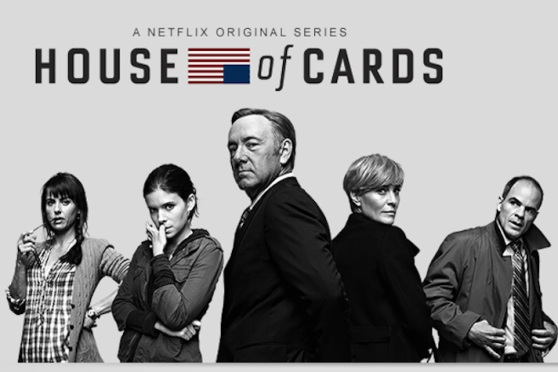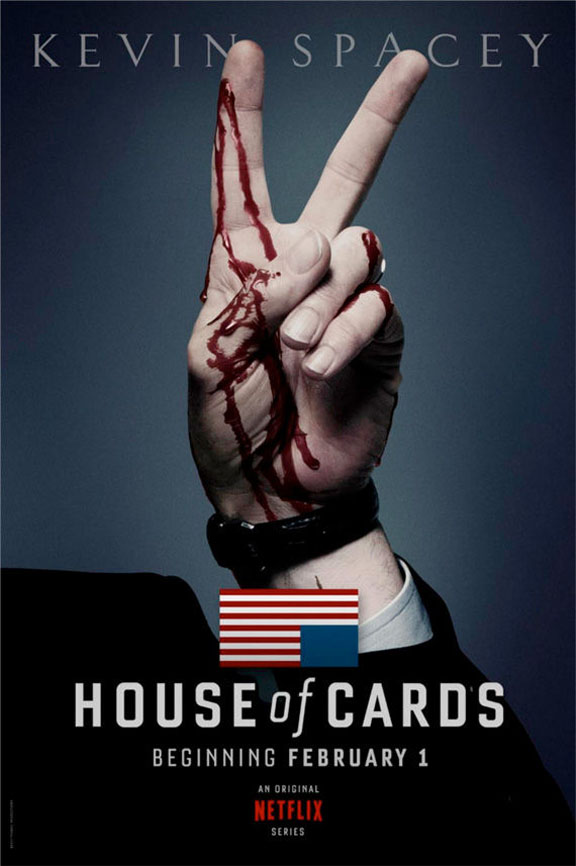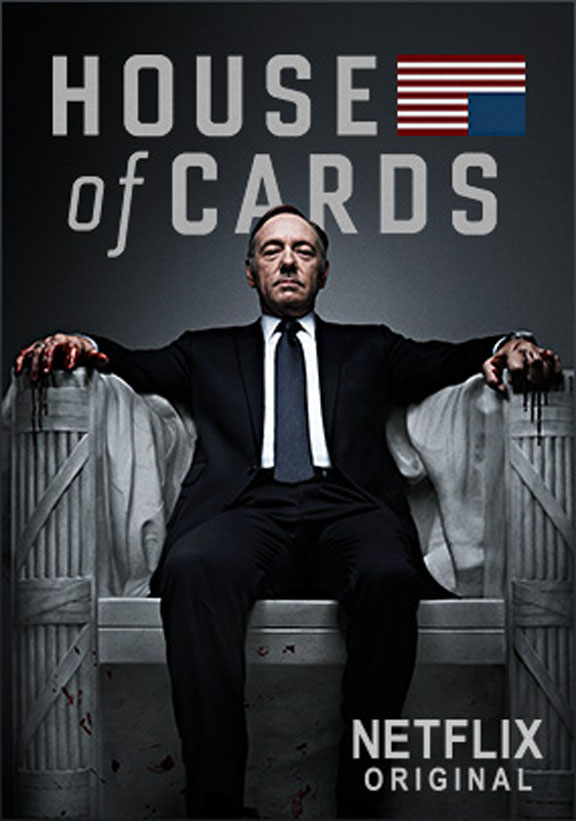


 |
 |
 |
When looking at the advertisements in comparison to one another, certain themes become predominantly clear. Power is the most prevalent theme around which all other issues circle. Notions of conflict, violence, responsibility, sexuality, and watchful cunningness also flood the images similar to the plotlines within the show itself which run rampant
Power: The image of Frank Underwood is established as powerful in all three images through a variety of tactics. First, in every image, Underwood's point of view is elevated above the audience. He is in a position to look down upon the viewer, which structures him in a masculine and dominating manner. His eye line affords him prominence greater than any other character. Also, the physical size of his image is larger than other characters when shown in relation to them. Underwood is also shown to be bigger than life in the images where he stands alone. For example, the image of his hand fills the entire frame in one advertisement and his body is pictured on scale with the Abraham Lincoln memorial statue in another. Furthermore, in every image Underwood is dressed impeccably well in a classic tailored suit. His clothing denotes his prominence and wealthy standing. In every frame, Underwood is centered and lighting often revolves around him. Not only is Frank Underwood himself pictured to be personally powerful, we see how in figure 1, characters revolve around him and while Underwood is able to stare down the audience, other characters are often looking at him or in his direction. The expression on Underwood's face is always serious and contemplative as if analyzing his surroundings. Underwood gains his power through his awareness and consequential manipulation of situations around him. Every aspect of his demeanor can be boiled down to a hunger for power. Also seen in figures 2 and 3, bloody hands evoke notions of violence and responsibility, yet these ideals are tools to develop power. In the show, we watch as Underwood is unafraid to get blood on his hands and commit acts of physical and corporate violence in order to achieve his goals and further himself and ultimately: his power. Power is a highly significant theme and ideal which flows through all the advertisements, grounding them with a central notion.
Conflict: (Violence & Responsibility) Issues of conflict can be seen most prevalently in figures 2 and 3 with both images showing hands dripping in blood. In figure two, conflict is portrayed through duality of signs with a bloody peace sign. This same idea carries into figure 3 when blood runs off of Underwood's hands and down a memorial statue. However, conflict can be seen in all images, including figure 1, through different outlets. Zoe Barnes appears on edge, Janine Skorsky reeks of attitude, and Doug Stamper portrays mysterious movement. The characters are portrayed a certain way to display conflict within themselves and with their surroundings. There is internal conflict (figure 1), conflict between peace and violence (figure 2), and conflict between power and justice (figure 3).
Sexuality: While sexuality is limited in display to figure 1, the only image with characters other than Frank Underwood shown, it is an important aspect because it feeds into the greater notion of power and conflict so dominantly displayed in figures 2 and 3. While Frank Underwood is always shown in a dominant, traditionally masculine pose, the women are displayed in a different air. Zoe and Claire are both pictured with their arms folded across their bodies and with a sense of coyness as their glances are angled (Zoe to Underwood and Claire over her shoulder). Janine stands more exposed but with her hand popped up on her hip. Both Janine and Claire draw attention to their mouths by biting either on their nails (Zoe) or the end of her glasses (Janine). Zoe's passionate eyes which seem alive with determination are looking in the direction of Frank Underwood which helps to hint at the relationship they share (a connection which is used to further both individuals power). Though notions of sexuality take a backseat to power and conflict, it still plays an important role in developing the themes portrayed in the advertisements. Sex is conflict and conflict is thrilling; sex is power and power is sexy.
| Cover Page | Lights, Camera, Action: An Introduction | Psychoanalysis | That's A Wrap: Concluding Thoughts | Bibliography |